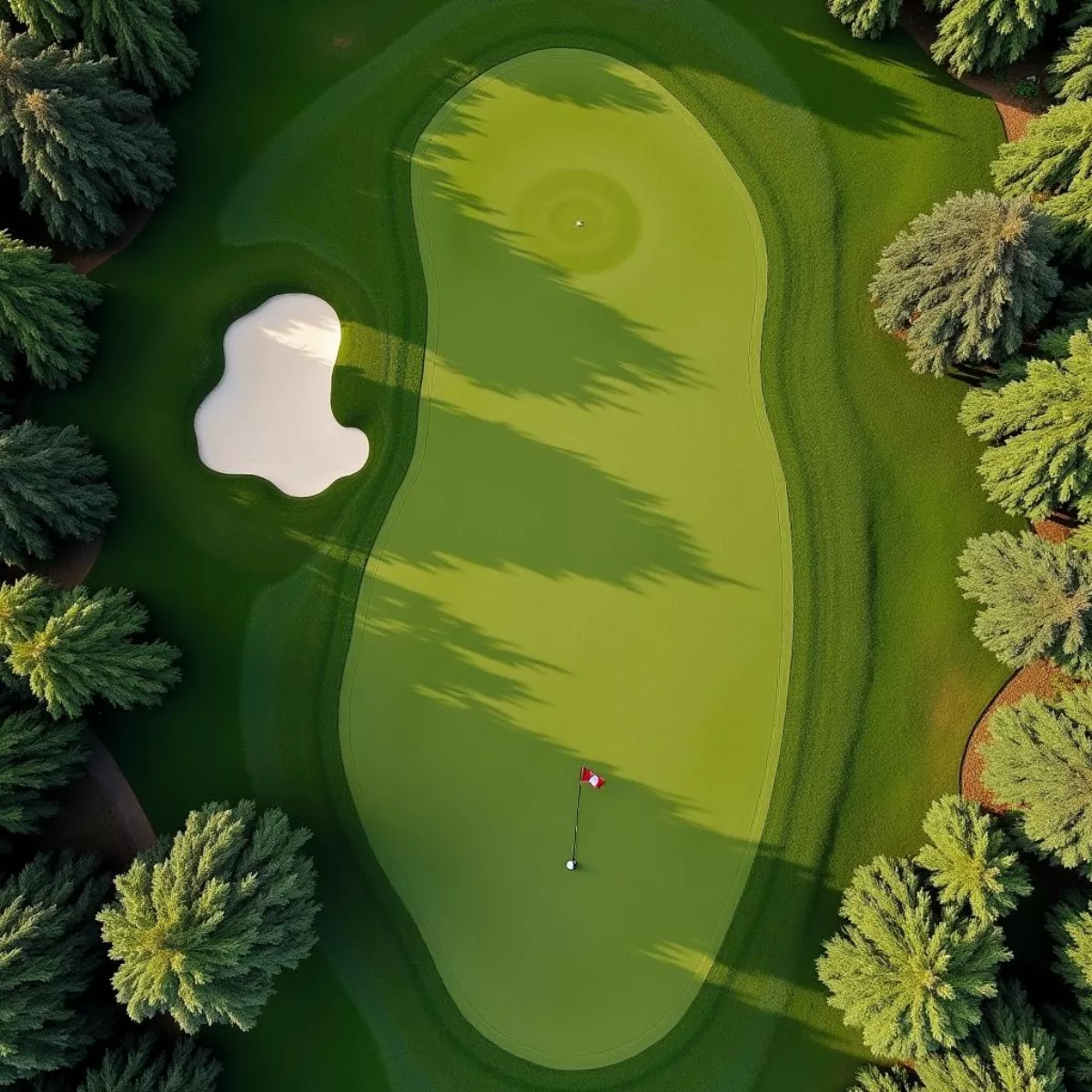Golf is often referred to as a game of precision, strategy, and skill. While the fairways and greens receive much attention, the rough plays a crucial role in the game. But what exactly is the rough in golf? How does it impact your play? Let’s dive deep into this often-overlooked aspect of the sport.
What is the Rough?
In golf terminology, the rough refers to the areas of longer grass found between the fairway and the boundaries of the course. This area is usually comprised of taller grasses and weeds. Typically, the rough is more difficult to play from compared to the fairway due to its thickness and length.
Types of Rough
- Primary Rough: This is the area immediately adjacent to the fairway. It’s often taller than fairway grass but not excessively thick.
- Secondary Rough: This area is found further away from the fairway, generally more challenging to navigate with longer, denser grass.
- Intermediate Rough: This is a transitional area, typically shorter than the primary rough but longer than fairway grass. It can have various textures depending on maintenance.
Each type presents unique challenges, testing a golfer’s ability to adapt to varying conditions.
 Golf Course Layout with Fairway and Rough
Golf Course Layout with Fairway and Rough
Why is the Rough Important?
Understanding the rough is critical for several reasons:
- Influence on Shot Play: The rough can significantly affect how you play your next shot.
- Club Selection: Being in the rough often requires a different club than when on the fairway.
- Psychological Factor: Knowing how to handle the rough can make you a more confident and capable golfer.
Quote: “Golf is a game of inches, and the rough can transform that inch into a mile.”
Challenges of Playing from the Rough
- Inconsistent Lies: The grass can inhibit the ball’s motion, leading to unpredictable lies.
- Increased Resistance: Longer grass can slow down clubhead speed, affecting distance and accuracy.
- Limited Visibility: Taller grass can obstruct your view of the target, making alignment and aiming more tricky.
 Golfer in the Rough Facing a Difficult Lie
Golfer in the Rough Facing a Difficult Lie
Tips for Playing from the Rough
Here are some practical tips to improve your performance when in the rough:
- Assess the Lie: Stand over the ball and evaluate the grass around it. Is it thick? Thin? This will influence your shot.
- Choose the Right Club: Often, you may need to use a club with a shorter distance but more control, like a 7-iron instead of a 9-iron.
- Deliberate Swing Mechanics: Focus on making a solid, controlled swing. A smoother swing can help avoid excessive grass interference.
- Use Loft: If you’re facing tall grass, selecting a club with a higher loft can help lift the ball from the rough.
- Stay Composed: Keep a positive mentality. The rough is part of the game, and addressing it rationally will lead to better results.
The Physical Characteristics of Rough
Understanding the physical characteristics of the rough can enhance your preparedness:
| Attribute | Description |
|---|---|
| Height | Varies, typically 2-6 inches or more |
| Density | Can be thick and matted, making it hard to play from |
| Grass Type | Varies by region but can include fescue, bluegrass, and ryegrass |
Maintenance of the Rough
Golf course maintenance staffs play a critical role in how the rough impacts gameplay. The height and density can fluctuate based on:
- Seasonal Changes: Grass grows quickly in spring and can become dormant in winter.
- Watering Practices: Courses often manage water levels to maintain the condition of the rough.
- Mowing Frequency: Regular mowing can keep the rough manageable and less punishing.
 Golf Course Maintenance – Mowing the Rough
Golf Course Maintenance – Mowing the Rough
The Mental Aspect of Playing from the Rough
When you’re in the rough, it’s essential to not just think physically but also mentally. Here are a few tips:
- Stay Positive: Acceptance of being in the rough helps maintain focus.
- Visualization: Picture your ideal shot before swinging, which can improve confidence.
- Routines: Create pre-shot routines that help you calm your nerves.
Incorporating the Rough into Your Strategy
In professional golf, players often craft strategies around the rough. If you’re a serious golfer, consider the following:
- Course Management: Plan your strategy to minimize time spent in the rough, which includes navigating your way through the course intelligently.
- Practice with Purpose: Regularly practice shots from the rough during training sessions to build familiarity.
- Know Your Game: Understand your strengths and weaknesses as a player, and adjust your play style accordingly.
Key Takeaways
- The rough is an essential part of golf that players often overlook but can significantly affect gameplay.
- Different types of rough exist: primary, secondary, and intermediate, with different playing characteristics.
- Key strategies for playing from the rough include assessing the lie, choosing the right club, and having a composure-focused mindset.
FAQs
Here are some frequently asked questions about the rough in golf:
- What is the rough used for in golf?
- The rough serves as a challenge, penalizing errant shots and adding complexity to gameplay.
- How do I play effectively from the rough?
- Assess the lie, choose the appropriate club, and maintain a steady, composed swing.
- Can the rough affect the ball’s distance?
- Yes, thicker grass can slow down the ball’s speed and affect its distance.
- What types of grass are commonly found in the rough?
- Common grasses include fescue, bluegrass, and ryegrass, depending on the region.
- Is there a recommended height for the rough?
- The height can vary, but typically, it ranges between 2-6 inches.
- Should I practice hitting from the rough?
- Yes, practicing your shots from the rough can prepare you for unexpected situations during a game.
- What’s the psychological impact of hitting into the rough?
- Confidence can dwindle, so maintaining a positive attitude is vital.
- Does the rough affect the mental aspect of the game?
- Absolutely, it can create stress or doubt, which affects performance.
- How often do golf courses maintain the rough?
- Maintenance frequency varies by the season and conditions, often tailored to keep the rough playable.
- What’s the best way to approach a round if I’m consistently hitting into the rough?
- Focus on course management and improving your ability to play from tricky lies.
By gaining a comprehensive understanding of the rough and its intricacies, you will undoubtedly enhance your skills on the golf course. Remember, golf is as much a mental game as it is physical—preparation and strategy are key. Whether you’re just starting or are an experienced player, mastering your approach to the rough can lead to greater enjoyment and success in your game!

